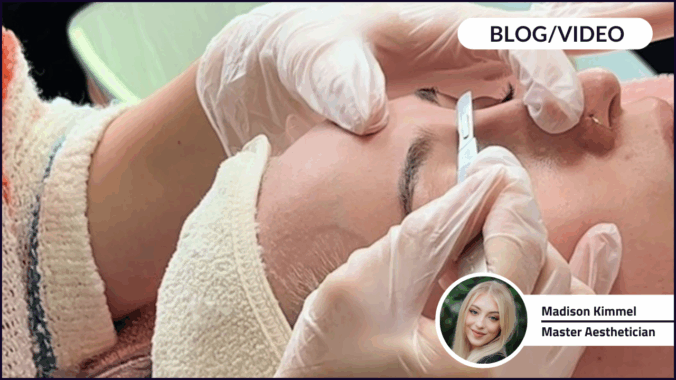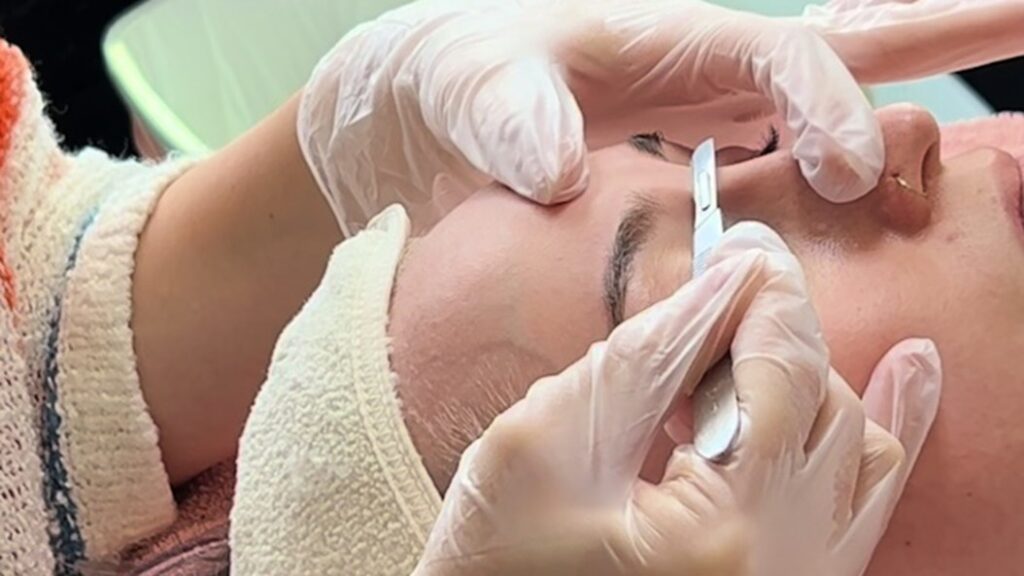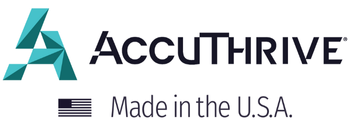
The Art of Professional Dermaplaning
The Art of Professional Dermaplaning
There is no question that dermaplaning is popular. Jump on TikTok or visit your local spa and you will see the procedure— an exfoliation to remove hair and dead skin cells from the face— everywhere.
“I recommend dermaplaning to everyone, especially women who are makeup wearers,” says Madison Kimmel, a master aesthetician in Staunton, Virginia. “It allows makeup to go on smoother and provides better product penetration because you’ve removed the layers of dead skin and peach fuzz between the product and skin absorption.”
The peach fuzz hair on the face, known as vellus hair, can trap dirt and oils and lead to acne.
We sat with Kimmel during a professional dermaplaning procedure, which takes about 30 minutes total, including skin preparation and aftercare. There is no downtime afterwards.
What is Dermaplaning?
Dermaplaning is painless and non-invasive, Kimmel says. Professionals wear gloves and use a sterile, single-use scalpel blade to perform the procedure.
First, she cleanses her client’s face and then lays out a fresh piece of gauze to collect the dead skin and hair. “A lot of my clients like to see what is taken off of their skin,” she says. “That way they see the benefits that they’re getting.”
The treatment is appropriate for all skin types, but patients with extremely sensitive skin, intense acne or conditions like eczema or rosacea should consult with a dermatologist before undergoing a dermaplane procedure, Kimmel says.
Starting between the eyebrows, Kimmel says the AccuThrive 10S dermaplane blade she uses is slightly smaller than competitor blades on the market, which makes it easier to fit into crevices of the face.
Throughout the procedure Kimmel holds the patient’s skin taut and the blade at a 45-degree angle and gently moves it back and forth. That angle allows her the best access while maximizing her client’s comfort.

As Kimmel moves the blade towards the forehead, white shavings of dead skin become visible almost immediately. She moves her fingers in tandem to keep the skin tight. As she approaches the patient’s hairline, she maneuvers the blade slightly to avoid the eyebrows. She tilts the client’s head from side to side to get the perfect angle.
“One of the most important things to remember is to brace the face and always pull the client’s skin taut where you’re working,” Kimmel says. “And be extra careful when gliding the blade across a bone or any area of facial curvature.”
She moves to the lower part of the client’s neck and works up and across the cheek.
She works in small sections, from the lower part of the neck, upwards, then down again. This is where most women have a significant amount of peach fuzz hair, she says.
“I’m mostly going against the direction of the hair growth,” she says “It will get us the closest, cleanest shave. But in some areas, it is easier to go from side to side. So, under the eye area, I am going to actually go sideways and I’m pulling the skin tight near the nose here.”
Once finished, Kimmel moves her client’s head back to the center and lowers her own face in search of any hair she may have missed. Then she applies a smoothing, calming and hydrating toner. When she is done, she shows her client all the dead skin and hair removed during the procedure.
“It’s so satisfying,” she says. “And the skin feels really nice and smooth.”
I Can Dermaplane at Home and Other Common Misconceptions
Walk down any drugstore aisle and you will see dermaplaning products for sale, so some may wonder why it is necessary to go to a professional.
Those products are certainly an option, but they will only remove the top layer of peach fuzz, Kimmel says. Professional dermaplane blades also remove the top layer of dead skin, which can help restore a healthy glow, achieve a more even skin tone and texture and reduce the appearance of fine lines, wrinkles and superficial acne scars. Removing the top layer of dead skin also allows skincare products to penetrate deeper and perform better, Kimmel says.
“In my opinion, you often get microtears with the drugstore blades,” Kimmel says. “And it’s best to be in a clean environment with someone who is knowledgeable about proper skin preparation and aftercare as well.”
Some clients worry that their hair regrowth will be darker and thicker, but Kimmel says that is not the case. “Body hair is terminal hair, and it is thicker and more coarse,” she says. Shaving terminal hair can leave the ends blunt or cause a sharp tip. But facial hair is vellus and it is going to regrow just like the peach fuzz you started with. So, while I understand this concern, it is never an issue.”
Click here to see more patient misconceptions about dermaplaning.
Let’s Connect
Join our mailing list to receive email updates on new product announcements, clinical articles and trade shows where you can test AccuThrive blades.
